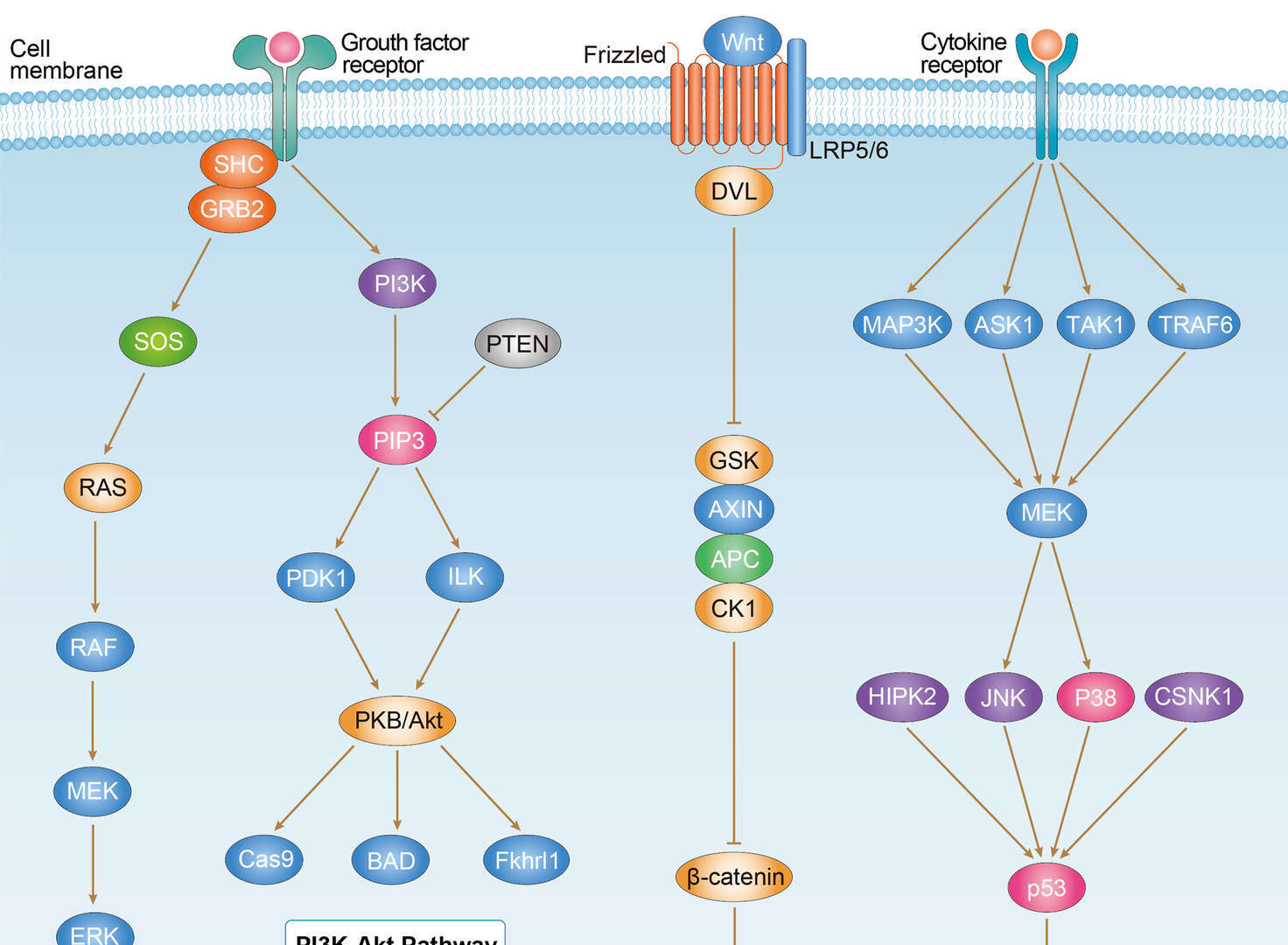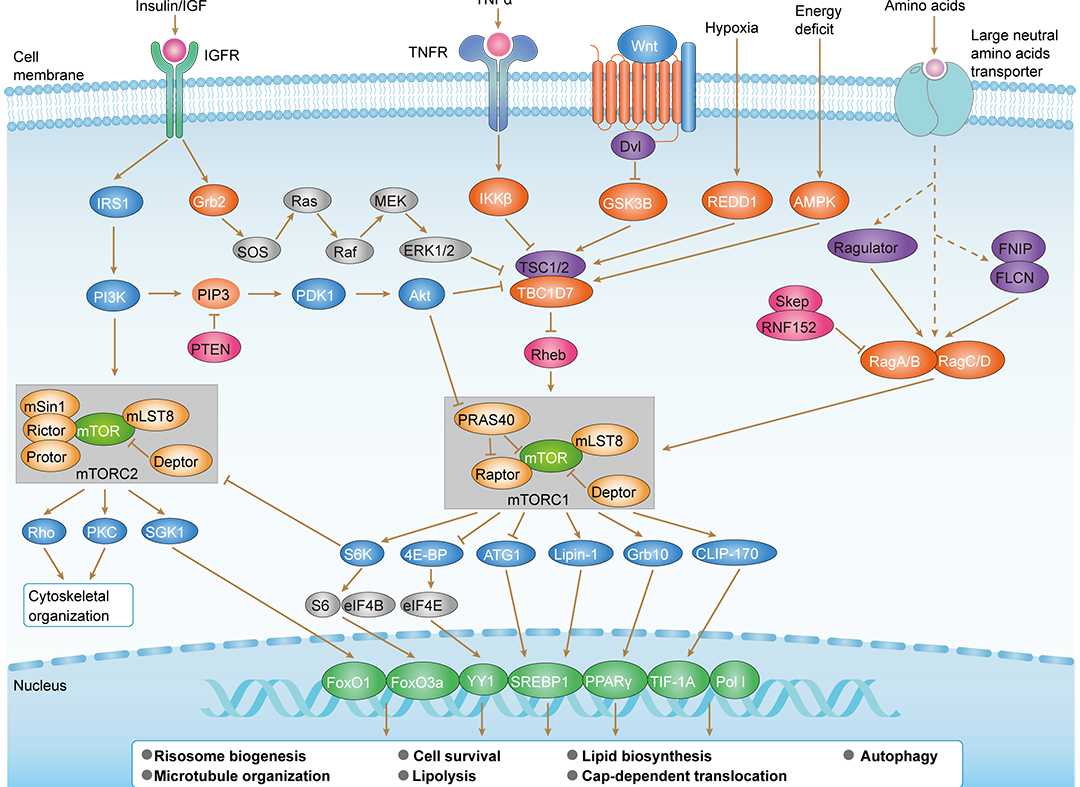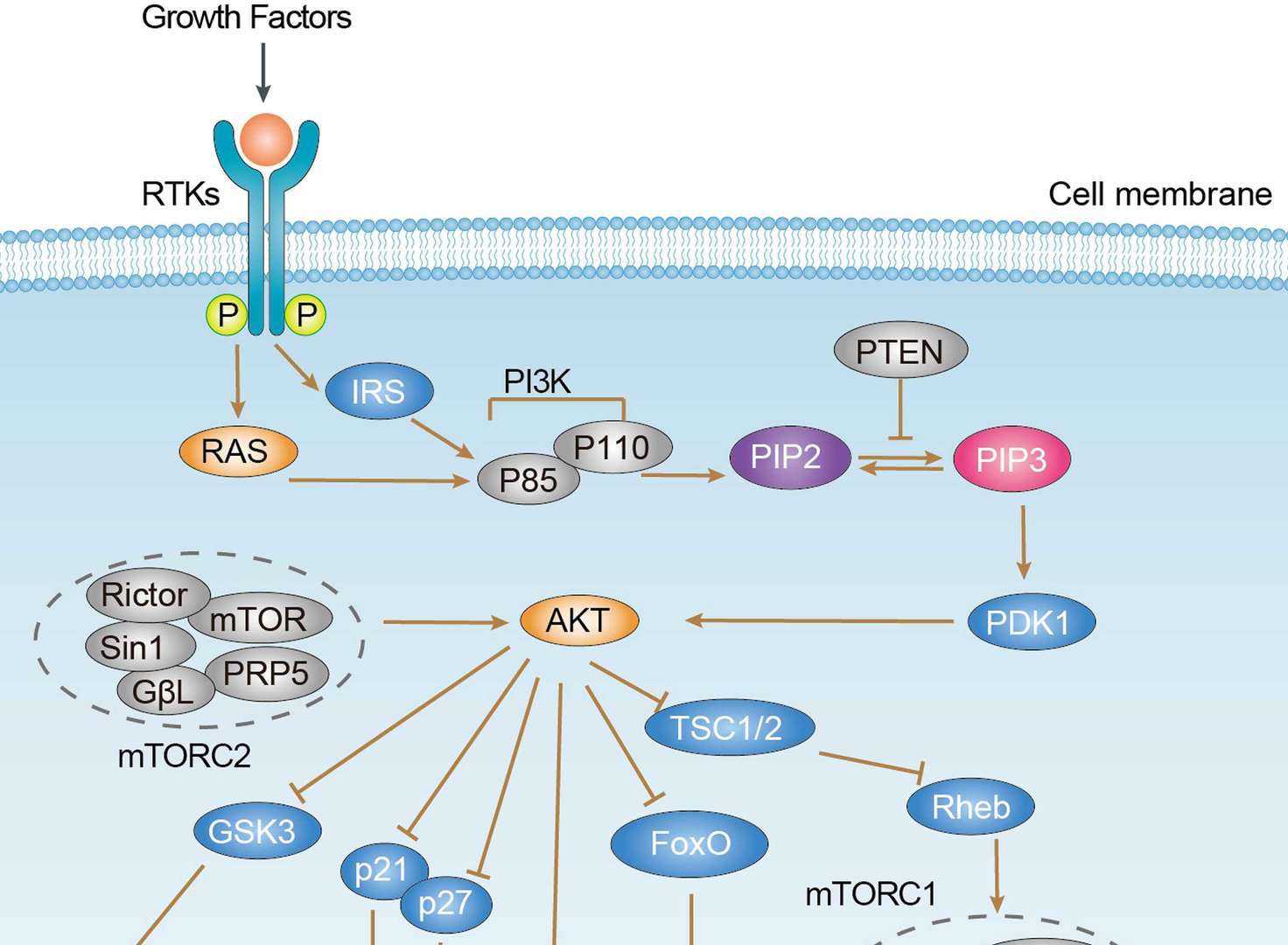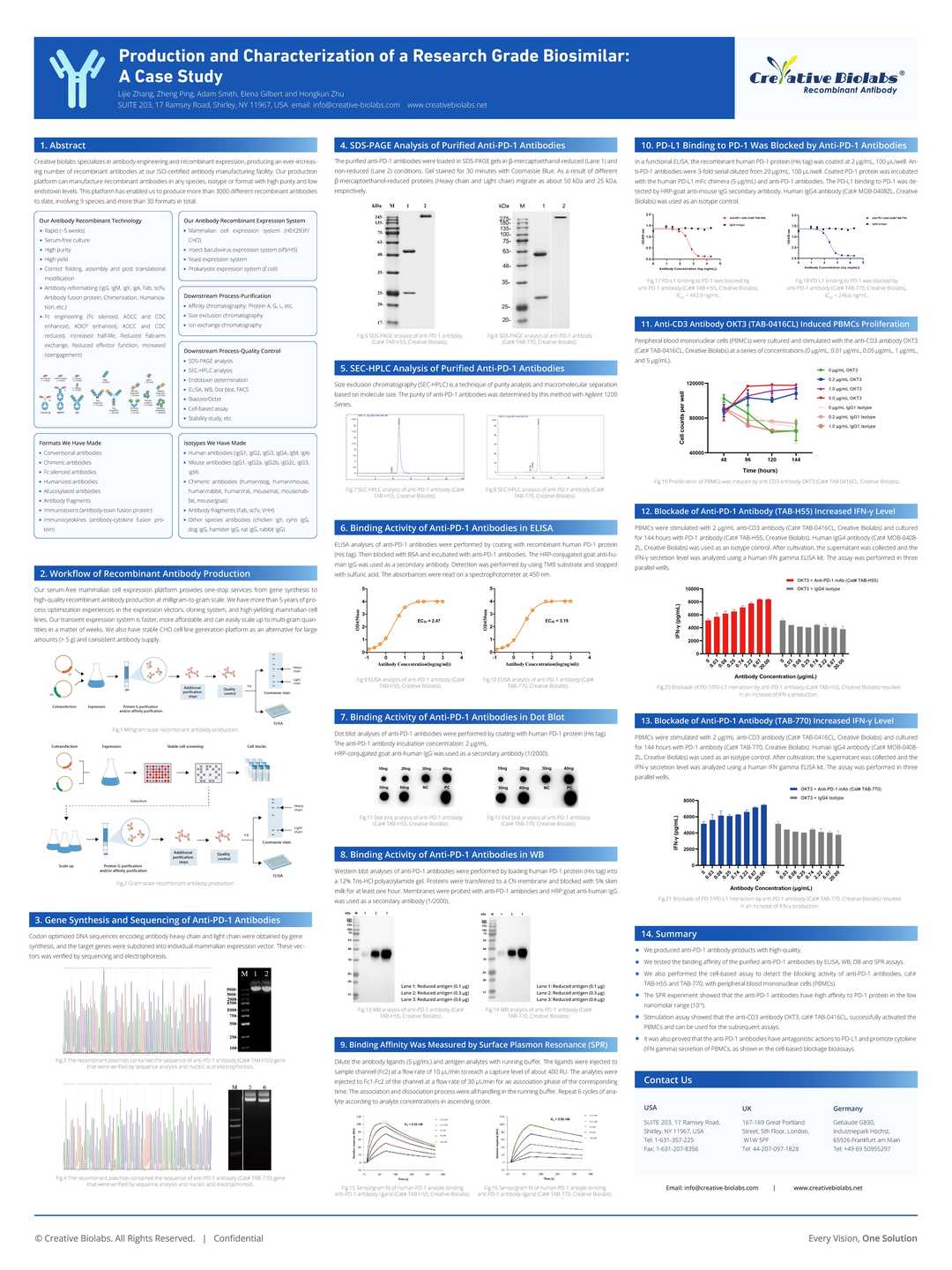Rabbit Anti-PTEN Recombinant Antibody (VS3-CJ1062)
CAT#: VS3-CJ1062
This product is a rabbit antibody that recognizes human, mouse, and rat PTEN.





Specifications
- Immunogen
- Recombinant protein
- Host Species
- Rabbit
- Type
- Rabbit IgG
- Specificity
- Human, Mouse, Rat PTEN
- Species Reactivity
- Human, Mouse, Rat
- Applications
- WB, ICC, IF, IHC
- Conjugate
- Unconjugated
Product Property
- Purification
- Protein A affinity purified
- Purity
- >95% as determined by SDS-PAGE
- Format
- Liquid
- Buffer
- 40% Glycerol, 1% BSA, TBS, pH7.4.
- Preservative
- 0.05% Sodium Azide
- Storage
- Store at 4°C for short term. Aliquot and store at -20°C for long term. Avoid repeated freeze/thaw cycles.
Applications
- Application Notes
- This antibody has been tested for use in Western Blot, Immunocytochemistry, Immunofluorescence, Immunohistochemistry.
Target
- Alternative Names
- BZS; DEC; CWS1; GLM2; MHAM; TEP1; MMAC1; PTEN1; 10q23del; PTENbeta
- Gene ID
- 5728
- UniProt ID
- P60484
- Sequence Similarities
- Belongs to the PTEN phosphatase protein family.
- Cellular Localization
- Cell projection, Cytoplasm, Nucleus, Secreted, Synapse
- Post Translation Modifications
- Constitutively phosphorylated by CK2 under normal conditions. Phosphorylated in vitro by MAST1, MAST2, MAST3 and STK11. Phosphorylation results in an inhibited activity towards PIP3. Phosphorylation can both inhibit or promote PDZ-binding. Phosphorylation at Tyr-336 by FRK/PTK5 protects this protein from ubiquitin-mediated degradation probably by inhibiting its binding to NEDD4. Phosphorylation by ROCK1 is essential for its stability and activity. Phosphorylation by PLK3 promotes its stability and prevents its degradation by the proteasome.
Monoubiquitinated; monoubiquitination is increased in presence of retinoic acid. Deubiquitinated by USP7; leading to its nuclear exclusion. Monoubiquitination of one of either Lys-13 and Lys-289 amino acid is sufficient to modulate PTEN compartmentalization. Ubiquitinated by XIAP/BIRC4.
- Protein Refseq
- NP_000305.3; NP_001291646.2; NP_001291647.1
- Function
- Acts as a dual-specificity protein phosphatase, dephosphorylating tyrosine-, serine- and threonine-phosphorylated proteins (PubMed:9187108, PubMed:9256433).
Also acts as a lipid phosphatase, removing the phosphate in the D3 position of the inositol ring from phosphatidylinositol 3,4,5-trisphosphate, phosphatidylinositol 3,4-diphosphate, phosphatidylinositol 3-phosphate and inositol 1,3,4,5-tetrakisphosphate with order of substrate preference in vitro PtdIns(3,4,5)P3> PtdIns(3,4)P2> PtdIns3P> Ins(1,3,4,5)P4 (PubMed:16824732, PubMed:26504226, PubMed:9593664).
Tumor suppressor, the lipid phosphatase activity is critical for its tumor suppressor function (PubMed:9187108, PubMed:9616126, PubMed:9811831).
Antagonizes the PI3K-AKT/PKB signaling pathway by dephosphorylating phosphoinositides and thereby modulating cell cycle progression and cell survival (By similarity).
The unphosphorylated form cooperates with MAGI2 to suppress AKT1 activation (PubMed:11707428).
In motile cells, suppresses the formation of lateral pseudopods and thereby promotes cell polarization and directed movement (PubMed:22279049).
Dephosphorylates tyrosine-phosphorylated focal adhesion kinase and inhibits cell migration and integrin-mediated cell spreading and focal adhesion formation (PubMed:22279049).
Plays a role as a key modulator of the AKT-mTOR signaling pathway controlling the tempo of the process of newborn neurons integration during adult neurogenesis, including correct neuron positioning, dendritic development and synapse formation (By similarity).
Involved in the regulation of synaptic function in excitatory hippocampal synapses. Recruited to the postsynaptic membrane upon NMDA receptor activation, is required for the modulation of synaptic activity during plasticity. Enhancement of lipid phosphatase activity is able to drive depression of AMPA receptor-mediated synaptic responses, activity required for NMDA receptor-dependent long-term depression (LTD) (By similarity).
May be a negative regulator of insulin signaling and glucose metabolism in adipose tissue. The nuclear monoubiquitinated form possesses greater apoptotic potential, whereas the cytoplasmic nonubiquitinated form induces less tumor suppressive ability (PubMed:10468583, PubMed:18716620).
Isoform alpha: Functional kinase, like isoform 1 it antagonizes the PI3K-AKT/PKB signaling pathway. Plays a role in mitochondrial energetic metabolism by promoting COX activity and ATP production, via collaboration with isoform 1 in increasing protein levels of PINK1.
Customer Review
There are currently no Customer reviews or questions for VS3-CJ1062. Click the button above to contact us or submit your feedback about this product.
Submit Your Publication
Published with our product? Submit your paper and receive a 10% discount on your next order! Share your research to earn exclusive rewards.
Related Diseases
Related Signaling Pathways
Downloadable Resources
Download resources about recombinant antibody development and antibody engineering to boost your research.
Product Notes
This is a product of Creative Biolabs' Hi-Affi™ recombinant antibody portfolio, which has several benefits including:
• Increased sensitivity
• Confirmed specificity
• High repeatability
• Excellent batch-to-batch consistency
• Sustainable supply
• Animal-free production
See more details about Hi-Affi™ recombinant antibody benefits.
Datasheet
MSDS
COA
Certificate of Analysis LookupTo download a Certificate of Analysis, please enter a lot number in the search box below. Note: Certificate of Analysis not available for kit components.
Protocol & Troubleshooting
We have outlined the assay protocols, covering reagents, solutions, procedures, and troubleshooting tips for common issues in order to better assist clients in conducting experiments with our products. View the full list of Protocol & Troubleshooting.
Isotype Control
- CAT
- Product Name
Secondary Antibody
- CAT
- Product Name
See other products for "PTEN"
Select a product category from the dropdown menu below to view related products.
| CAT | Product Name | Application | Type |
|---|---|---|---|
| IAB-B021(A) | Recombinant Anti-mouse PTEN Intrabody [(D-Arg)9] | PCA, WB, FuncS | scFv-(D-Arg)9 |
| IAB-B021(G) | Recombinant Anti-mouse PTEN Intrabody [+36 GFP] | FACS, ELISA, IF, FuncS | scFv-(+36GFP) |
| IAB-B021(T) | Recombinant Anti-mouse PTEN Intrabody [Tat] | FACS, ICC, FuncS | scFv-Tat |
| CAT | Product Name | Application | Type |
|---|---|---|---|
| MOR-2915 | Hi-Affi™ Recombinant Rabbit Anti-PTEN Monoclonal Antibody (DS2915AB) | ICC, IHC-P, IP, WB | IgG |
| CAT | Product Name | Application | Type |
|---|---|---|---|
| MOB-0231F | Mouse Anti-PTEN Recombinant Antibody (clone 2C10) | IHC-P, IF | Mouse IgG |
| MOB-0232F | Mouse Anti-PTEN Recombinant Antibody (clone 9E8) | IHC-P, IF | Mouse IgG |
| ZG-0527U | Rabbit Anti-Phospho-PTEN (S380) Recombinant Antibody (clone 4D10) | ELISA, WB | Rabbit IgG |
| VS3-QX925 | Mouse Anti-PTEN Recombinant Antibody (clone 4G4-4H9-1E10) | IHC | Mouse IgG1 |
| VS3-QX926 | Mouse Anti-PTEN Recombinant Antibody (clone 7H2-6G9-6H5) | IHC | Mouse IgG1 |
| CAT | Product Name | Application | Type |
|---|---|---|---|
| VS-0225-XY183 | CytoStream™ Mouse Anti-PTEN Recombinant Antibody (VS-0225-XY183) | FC | Mouse IgG1, kappa |
| CAT | Product Name | Application | Type |
|---|---|---|---|
| VS-0325-XY1816 | Anti-PTEN Immunohistochemistry Kit | IHC | |
| VS-0525-XY5823 | Anti-Mouse PTEN Immunohistochemistry Kit | IHC | |
| VS-0525-XY5822 | Anti-Human PTEN Immunohistochemistry Kit | IHC | |
| VS-0525-XY5824 | Anti-Rat PTEN Immunohistochemistry Kit | IHC |
Popular Products

Application: ELISA, FC, IP, FuncS, IF, Neut, ICC

Application: ELISA, IP, FC, FuncS, Neut, IF, ICC

Application: WB, ELISA, IF

Application: SPR, Inhib, FuncS

Application: WB, ELISA, FuncS, IB, FC, SPR, Apop

Application: ELISA, IHC, FC, IP, IF, BL

Application: ELISA, IHC, FC, IP, IF, FuncS
-2.png)
Application: ELISA
For research use only. Not intended for any clinical use. No products from Creative Biolabs may be resold, modified for resale or used to manufacture commercial products without prior written approval from Creative Biolabs.
This site is protected by reCAPTCHA and the Google Privacy Policy and Terms of Service apply.








 Endometrial Cancer
Endometrial Cancer
 mTOR Signaling Pathway
mTOR Signaling Pathway
 PI3K-Akt Signaling Pathway
PI3K-Akt Signaling Pathway
















